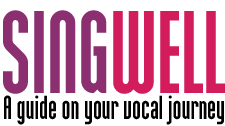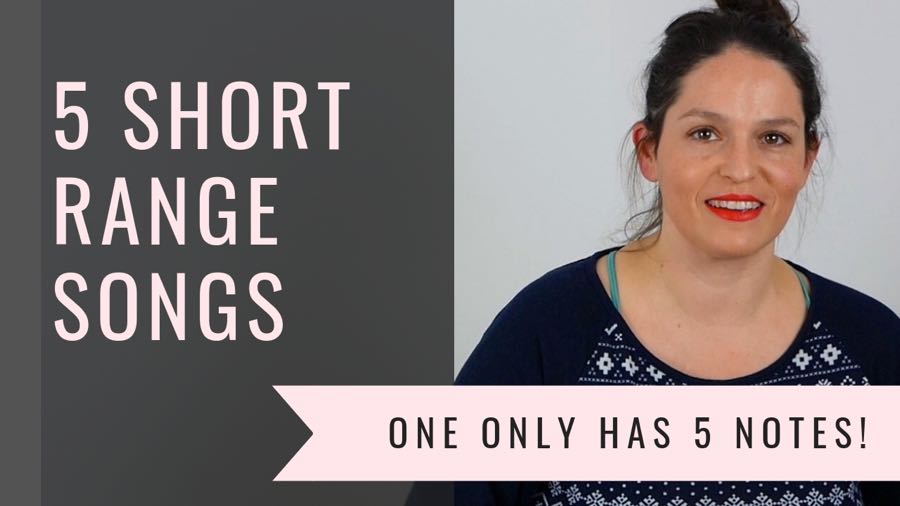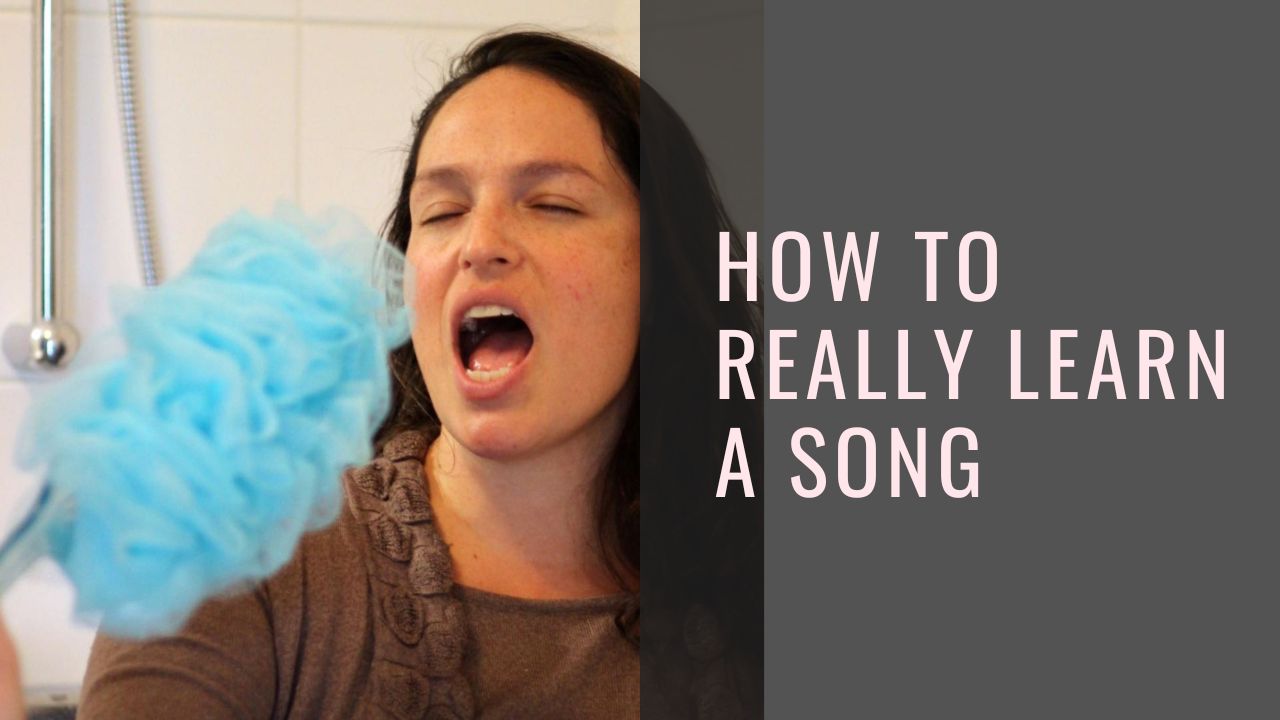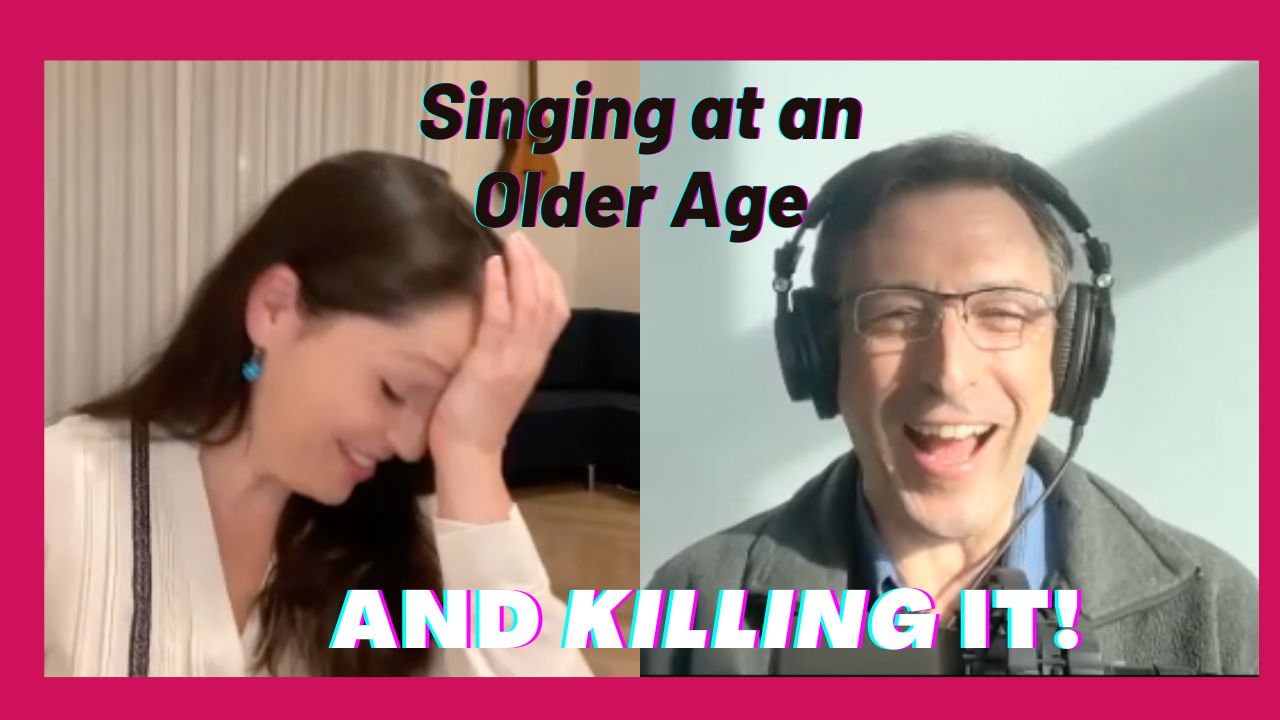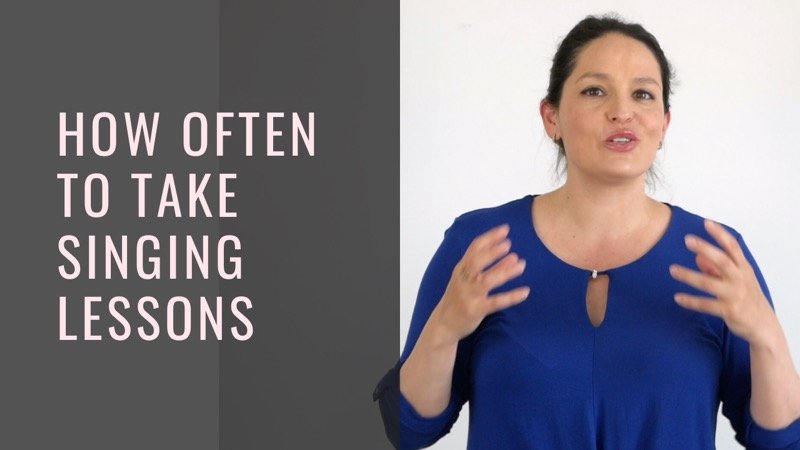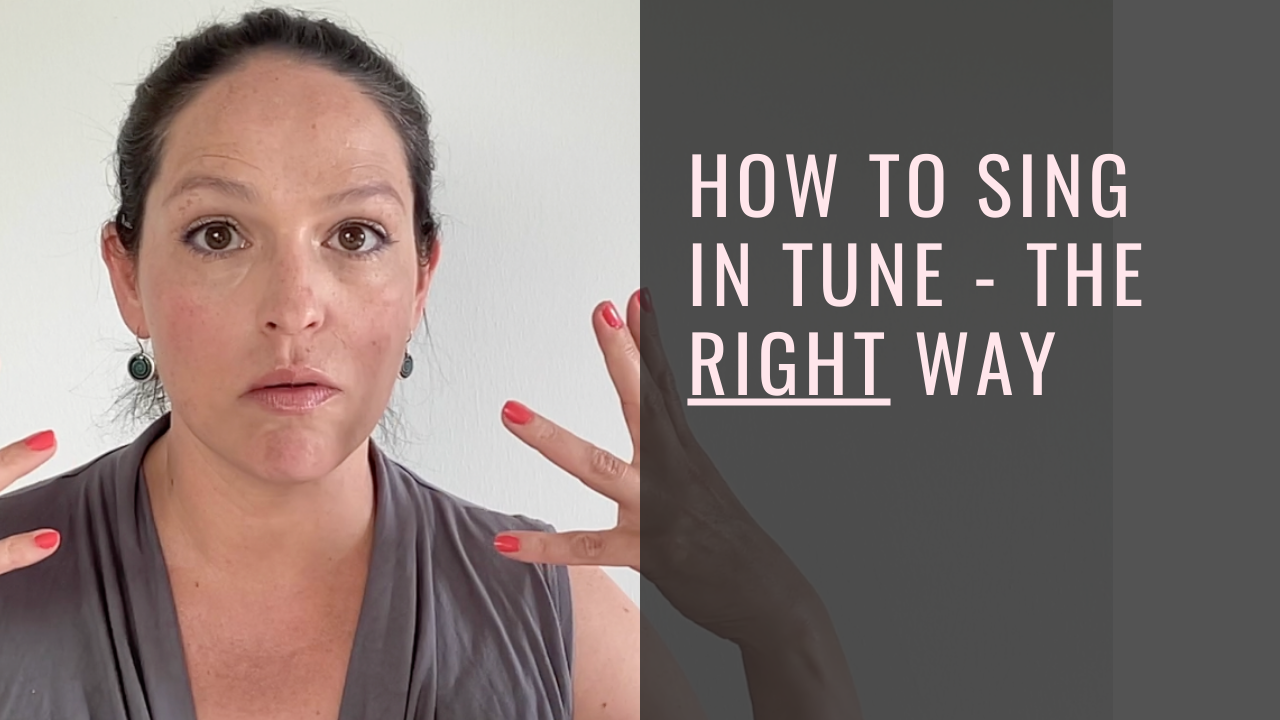Most people struggle with singing and playing an instrument at the same time. But we just love singing, and we love playing. So we want to figure this out.
It would be great to be able to sing and play guitar, or sing and play the piano, or ukulele, whatever your poison is. A lot of us have that campfire fantasy, to just take our instrument out and play, and sing, just have a good time.
Today we will learn how to play and sing simultaneously. I’ll give you my experience, my insights as to what will help you coordinate the instrument and your voice - and it’s not necessarily what you would think 😉
The non-sexy (but effective) way to play and sing at the same time
We don’t want to admit it, but the simple truth is sometimes too simplistic, maybe even boring. In this case, the answer is boring, but the execution is not.
You can build up your skill to play and sing at the same time by taking it step by step. Here are the steps and the reasons you need them:
- Establish the playing without the singing
Multitasking has never been my favourite thing nor my strong suit. So I avoid it when I can. Unless you have the gift of sight reading and you can multitask things you haven’t mastered yet - you need to take some time to know what you are playing. And feel confident in it, at least to some degree, then you add another endeavour to the mix.
- Establish the singing without the playing
When you sing and play, you can’t really focus on the quality of your singing. Especially if you are trying to improve you singing, or overcome a certain vocal difficulty in the song - you could use some concentration on the voice itself.
- Combine singing and playing one verse/chorus at a time
This is a pain in the butt, this one. You can’t just do the whole song right away! Why not? Well, because then that means you can already play and sing and you don’t need to be reading this. If you need help with this coordination - you also need to break the song down. Focus is magical, believe me, it will take you far.
- Start slowly and gradually speed up
It is psychologically difficult to slow down. But ironically, it will go much quicker that way. If you try to attack it all at once, well, it’s not gonna work. I can’t prove this to you, I don’t have a research for this. But you will proof it if you try it 🙂
Ok, you are annoyed with me now, I get it. Really? That’s the best you’e got? No magic tricks? Wait for it, this is just the beginning.
The sexy way to sing and play at the same time
So you have sort of a baseline of confidence in your guitar/piano/uke part, and you have practiced some singing without the instrument. Now it’s time to make the two elements work for each other.
How about I teach you to:
Interested? OK here we go.
Use the instrument to check your posture
When we sit down to an instrument to play and sing simultaneously, we tend to lean forward, hunch and get tension around our throats. Good luck singing freely that way.
But we can take advantage of our new position to assist our vocal alignment. How? Use the instrument as your reference point. Here’s the guide:
Piano
A bit of Alexander technique could help here. Use these directive thoughts, do not try to actively fixate your body parts to stay in place:
Sit with your lower and upper legs are 90 degrees (it’s ok if the right foot needs to go forward a bit for the pedal). Same with your upper legs&torso. Elbows relaxing downwards, back of the head goes up and away from the keyboard, Chin towards the keyboard.
So you use the piano/keyboard as a reference point to get a nice long open singing instrument! Like in this neat x-rays:
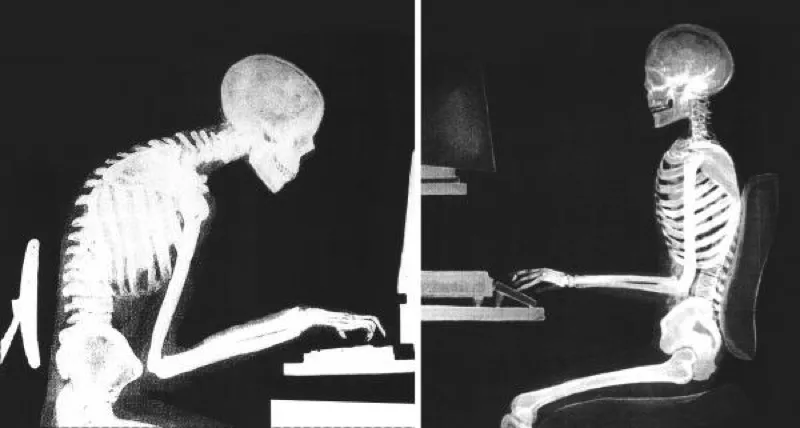
Left skeleton is hunched over. Right Skeleton is doing it right!
"Use your instrument as a reference point to align your posture, enrich your vocal tone and ease your high notes"
Tip while singing: let the chin drop, on every note if possible, towards the space between the keyboard and your torso.
Guitar/Ukelele
Feel your sit bones in the chair, or feel your heels in the ground if you are standing. Let your chin point down towards the border between your body and the body of the guitar/uke.
Do not go with your head in front of the body of the guitar! That will cause neck tension. Let the back of the head go away from the guitar/uke. This might feel like you are looking over a cliff.
It looks something like this:
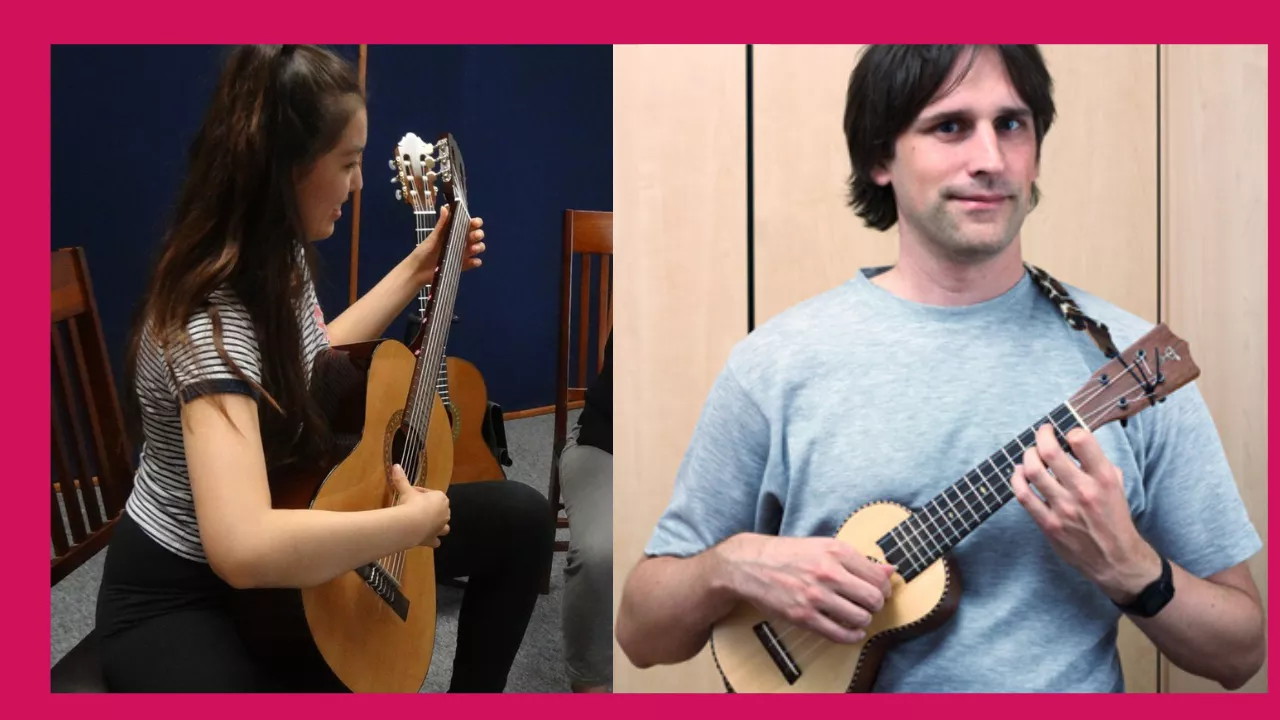
Tip while singing: let the chin drop, on every note if possible, towards the space between your body and your guitar.
Want to get comfortable performing?
I have a stage course
With immediate access to a performance platform
Here is a great example of a master at work - Jeff Buckley. The legendary (and sadly late) performer knew exactly how to be aligned while playing the guitar, and look how this jaw drops!
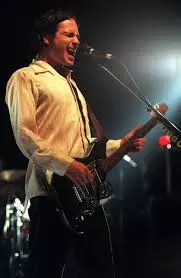
You can learn more on posture in my article about Alexander Technique.
Use your instrument to enhance your singing resonance (better tone)
Sometimes playing and singing at the same time can cause one to try too hard, in a non-helpful way. Because we are multitasking two different endeavours. It takes concentration and coordination (that, frankly, not everyone has naturally, I know I don’t).
So framing the two missions, playing and singing, as one task in your mind, can help ease the task - and there is a side bonus: it will make you sound better! Here’s how:
Piano
When you sit at the piano and get ready to sing, think of inhaling in the direction of underneath your chair. Alternatively, you can imagine the piano filling up with air!
Then, when singing, fill up the space of the piano/under the chair with your sound (in your mind, of course, this is a brain trick).
Guitar/Ukelele
When you inhale, think of the air filling up the body of the guitar/uke, or the space in your body which is behind the guitar/uke.
Then, while singing, have the image of your sound filling the space you first filled with air.
What are you talking about, Linor? Why is this even helpful?
This is a bit weird, granted, but this trick will make you breathe deeper without lifting your chest/shoulder muscles too much. As a result you will have more open resonances in your body and your tone will be richer. Try it!
Use your instrument to get comfortable in your voice
This will work similarly for all instruments.
Before singing and/or playing, establish the feeling of your sitting bones in the chair (or your heels in the ground, if you’re standing).
While singing, especially higher notes, imagine the sound going towards your sitting bones or heels. This goes hand-in-hand with the dropping of the jaw we talked about above in the posture section. The jaw drops downwards, so does the sound. It’s a trick - give it a wirl.
What this does
This action of pretending your sound goes downwards distracts you from thinking of the sound as being made by the upper part of the body, which tends to cause straining.
The sound is made by almost your entire body! So use the instrument you are playing to get the sensation of your whole body, and it will help you relax your muscles that would otherwise work to the detriment of your voice.
Whatever it is you need to learn and practice, make sure you do it with some structure, so you don't get lost. You can check out my fun practice method here.
You have learned a lot - time to put this into action. Let me know how it goes or if you have any questions!
Linor

About the author
Linor Oren
I'm an opera singer and (online) voice teacher, based in Amsterdam. It took me more than a decade to overcome my share of mental and physical issues and reach a professional level as a singer. Because of this background, and my 10+ years of teaching experience, I believe I can speed up your learning curve as a singer.
Take your desire to sing seriously: get tools to become a better singer in your inbox
Eye-openers, motivation and stories. Also valuable tips that I don't publish on my website.
